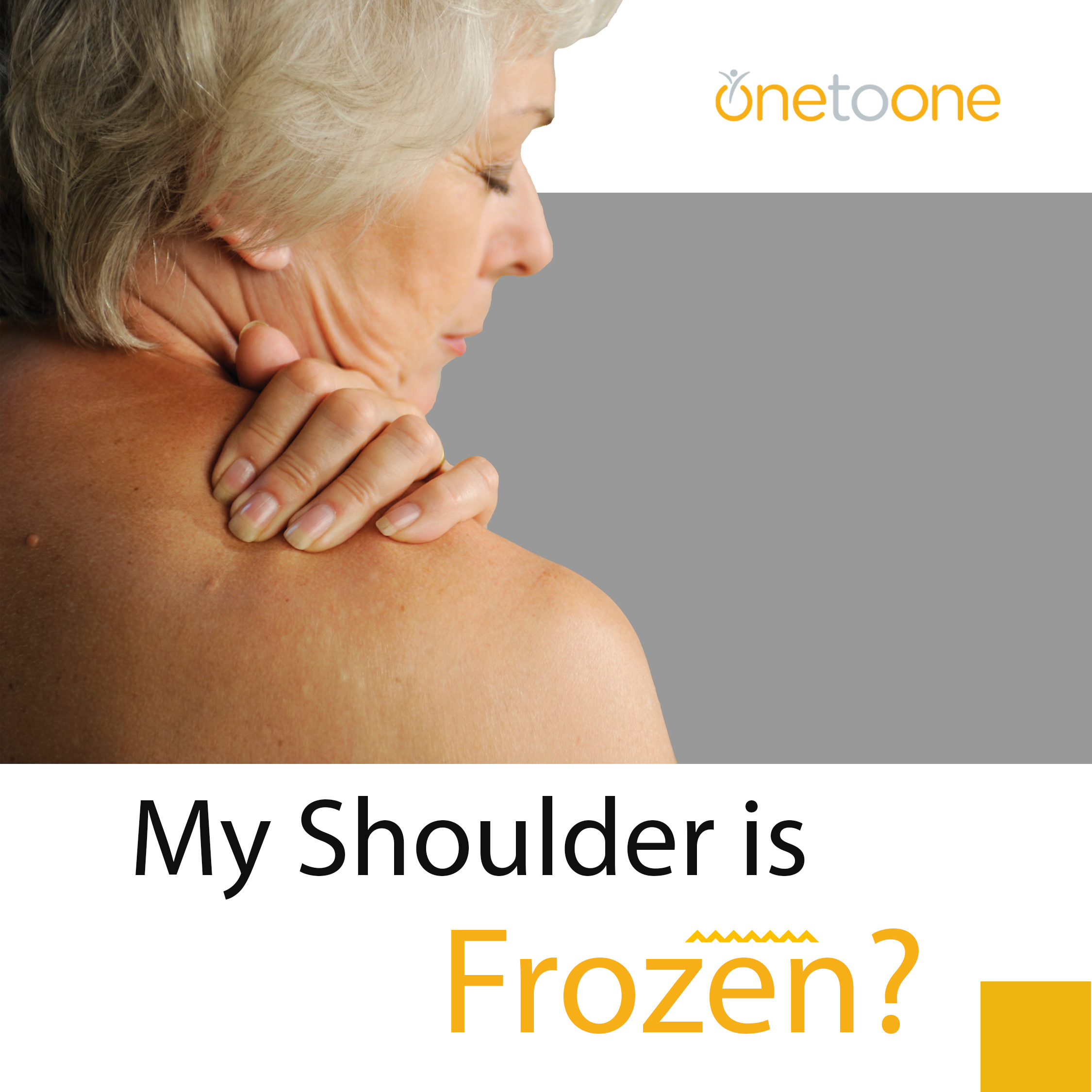My Shoulder is Frozen?
There is an awful condition called adhesive capsulitis, or more commonly referred to as frozen shoulder, that shows up in about 2% of the population, mostly between ages 40 and 60, and more often women than men. It is associated with stiffness and pain in your shoulder and can be treated in many manners with relatively the same outcome. Unfortunately, the outcome, which is usually that the pain and stiffness resolve, doesn’t happen very quickly, often requiring 2-3 years to fully return to normal. The reason why I decided to write about this subject is to hopefully save someone who has this terrible pain even more, and rather unnecessary, pain because of treatment to supposedly help them.
First we have to look at what it is to understand how we can know what we should do if it happens to you. Anatomically, the shoulder joint, which is made up bones, ligaments, and tendons is surrounded by connective tissue which forms a type of capsule to further support of the “ball and socket” joint. See the picture below. Systemic issues can increase the likelihood of frozen shoulder (Diabetes, Parkinson’s disease, thyroid issues) but more commonly the capsule, for many reasons such as tendon injuries, a broken bone, post surgery, all at the shoulder area, or following a stroke, can thicken and tighten and become inflamed. Now it hurts every time you move your arm. So then the less you move, then the stiffer it gets, but also the more forceful you make it move, the more painful it gets. Darned if you darned, darned if you don’t it seems!!

Frozen shoulder is characterized into 3 stages:
- 1) Painful (“freezing”) stage: pain with almost all movements at the shoulder, losing range of motion over a period 6 weeks to 9 months.
- 2) Frozen stage: Perhaps a bit less painful but losing more range of motion, lasting about 4 to 6 months.
- 3) Thawing stage: Again, a little less painful and range of motion slowly returns, taking 6 months to 2 years to complete.
Options on how to treat frozen shoulder: (this is not an exhaustive list but these are two more common attacks!)
- 1) Physiotherapy: There are two ways of treating frozen shoulder with therapeutic exercise. One way is to passively and actively stretch the shoulder as much as possible (despite discomfort or pain) by doing a series of daily exercises. The second way is to gently work the joint actively and passively through its available painfree range. One study in 2004 (1) looked at the effect of (group A) intensive passive stretching and manual mobilization compared to outcomes from (group B) supportive therapy and exercises within the pain limits. At the end of one year 64% of group B had normal or near-normal painfree function and at two years 89% had the same. Interestingly, the “no pain no gain” group A had only 63% normal or near-normal painfree range at the end of two years.
- 2) Surgery: Manipulation of the capsule (while put to sleep the surgeon will forcefully move your shoulder causing the capsule and scar tissue to stretch and tear). A study in 2007 (2) compared manipulation under anaesthesia versus a control group who did therapeutic exercises with a physiotherapist. Despite quicker initial small improvements with the surgery, after 3, 6, and 12 months the two groups were similar in pain and function and after one more year both groups had only minimal pain and function loss.
Having frozen shoulder is terrible, but there is a light at the end of the tunnel for you. I would strongly suggest if you decide to try to get some relief through active treatment that you really look into the research and hopefully find the treatment that will not increase your pain and/or possibly delay your progress. I believe that proper, gentle physiotherapy can be helpful and somewhat pain-relieving and should be a part of a frozen shoulder recovery.
References:
- 1) Diercks RL, et al. Gentle thawing of the frozen shoulder: a prospective study of supervised neglect versus intensive physical therapy in seventy-seven patients with frozen shoulder syndrome followed up for two years. J Shoulder Elbow Surg. 2004 Sep-Oct;13(5):499-502.
- 2) Kivimäki J, et al Manipulation under anesthesia with home exercises versus home exercises alone in the treatment of frozen shoulder: a randomized, controlled trial with 125 patients J Shoulder Elbow Surg. 2007 Nov-Dec;16(6):722-6.

ONE TO ONE WELLNESS
1535 Dresden Row
Halifax, NS B3J 3T1
Monday - Friday7:30am - 7:00pm

Phone: (902) 425-3775
Fax: (902) 425-3774
ONE TO ONE WELLNESS CENTRE
1535 Dresden Row suite 210
Halifax, NS B3J 3T1
Copyright © 2025 One To One Wellness | All Rights Reserved | Powered by H-Cube Marketing